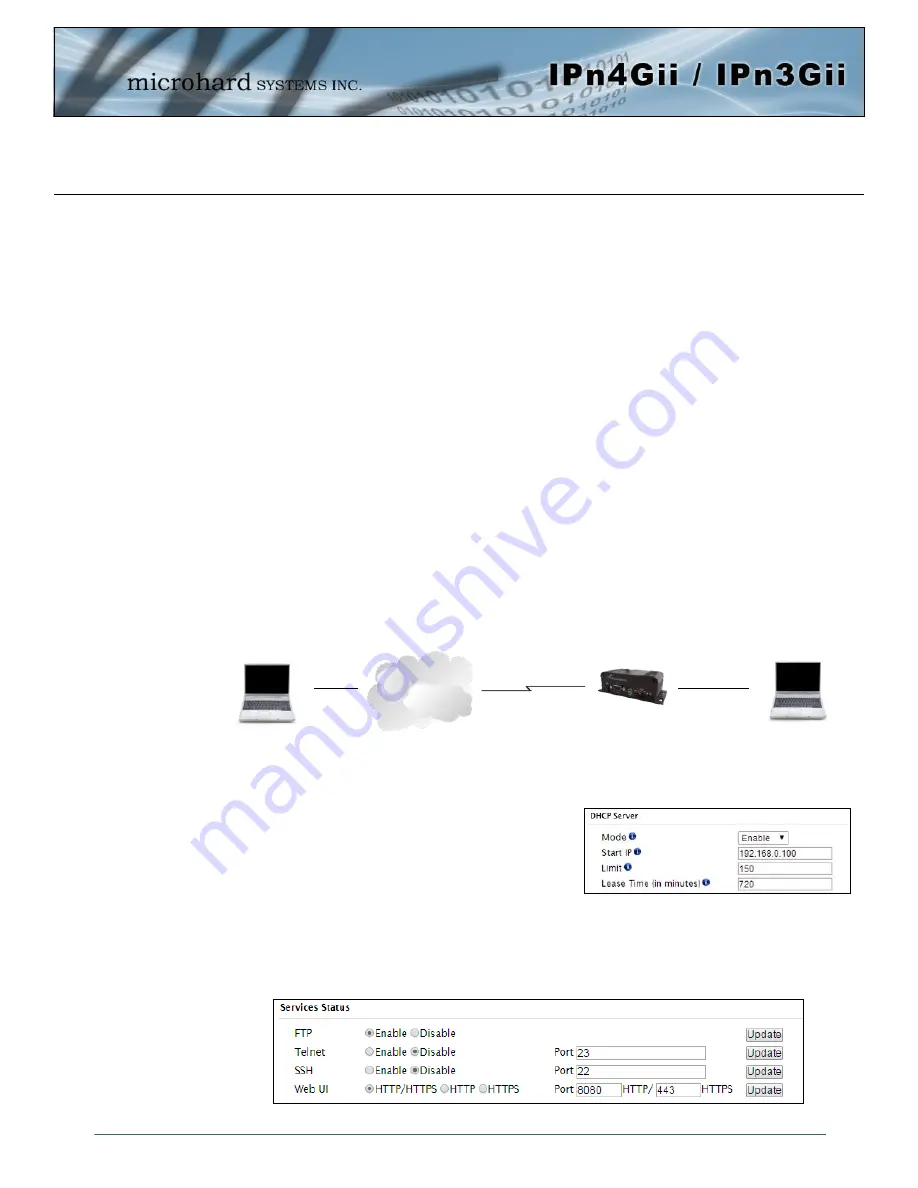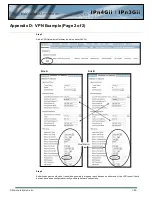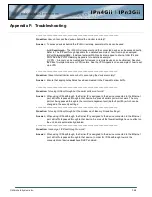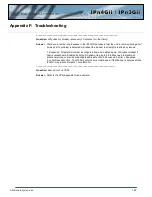
© Microhard Systems Inc.
175
Appendix B: IP-Passthrough Example (Page 1 of 2)
By completing the Quick Start process, a user should have been able to log in and set up the
IPnXGii
to
work with their cellular carrier. By completing this, the modem is ready to be used to access the internet
and provide mobile connectivity. However, a common application of the
IPnXGii
is to access connected
devices remotely. In order to do this, the
IPnXGii
must be told how to deal with incoming traffic, where to
send it to. To accomplish this there are three options :
- IP-Passthrough
- Port Forwarding
- DMZ (a type of Port Forwarding)
In this section we will talk about IP-Passthrough and how to configure the IPnXGii and the connected
device/PC to work with IP-Passthrough. IP-Passthrough means that the IPnXGii is transparent, and all
outside (WAN) traffic is simply sent directly to a single device connected to the physical LAN RJ-45 port on
the IPnXGii (With exception of port 80, which is retained for remote configuration (configurable). Also, any
traffic that is sent to the RJ45 port is sent directly out the WAN port and is not processed by the IPnXGii.
IP-Passthrough is ideal for applications where only a single device is connected to the IPnXGii, and other
features of the IPnXGii are not required. When in pass-through mode, most features of the IPnXGii are
bypassed, this includes the serial ports, the GPS features, VPN, and much more. The advantage of IP-
Passthrough is that the configuration is very simple.
In the example below we have a IPn3Gii connected to a PC (PC2). The application requires that PC1 be
able to access several services on PC2. Using Port Forwarding this would require a new rule created for
each port, and some applications or services may require several ports so this would require several rules,
and the rules may be different for each installation, making future maintenance difficult. For IP-
passthrough, PC1 only needs to know the Public Static IP Address of the IPn3Gii, the IPn3Gii would then
automatically assign, via DHCP, the WAN IP to the attached PC2, creating a transparent connection.
Step 1
Log into the IPn3Gii (Refer to Quick Start), and ensure that DHCP
is enabled on the
Network > LAN
page.
Step 2
Since PC2 requires port 80 to be used as its Web server port, port 80 cannot be used on the IPn3Gii, by default it
retains this port for remote configuration. To change the port used by the IPn3Gii, navigate to the
System > Services
page. For this example we are going to change it to port 8080. When changing port numbers on the IPn3Gii, it is
recommended to reboot the unit before continuing, remember the new WebUI port is now 8080 when you log back into
the IPn3Gii. (e.g. 192.168.168.1:8080).
Cellular Network/
Internet
WAN IP: 74.198.186.193
(Cellular Carrier)
LAN IP: 74.198.186.1 (Used
for WebUI from LAN)
PC2: (DHCP)
WebServer running on port 80
Connected to RJ45
LAN Ethernet Port.
Wireless Cellular
Connection
PC1: Connected to
internet.


























